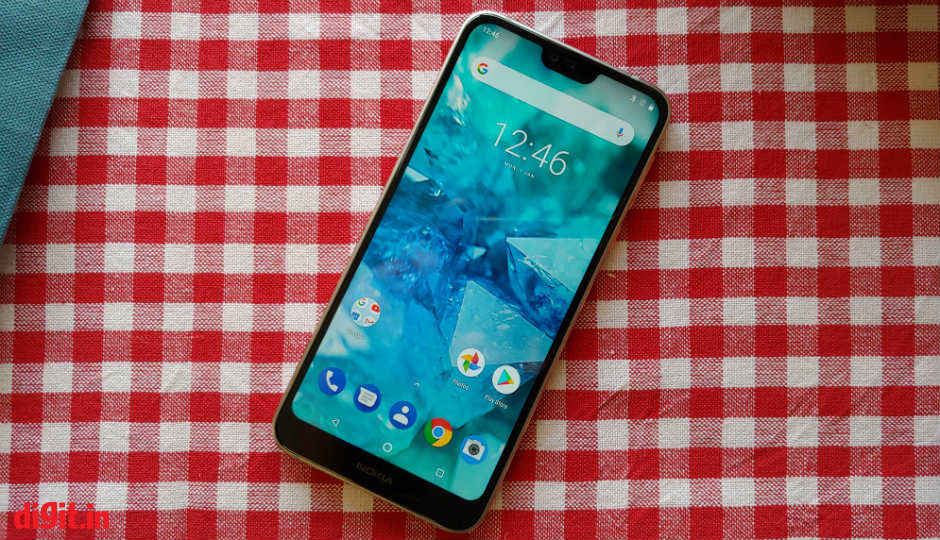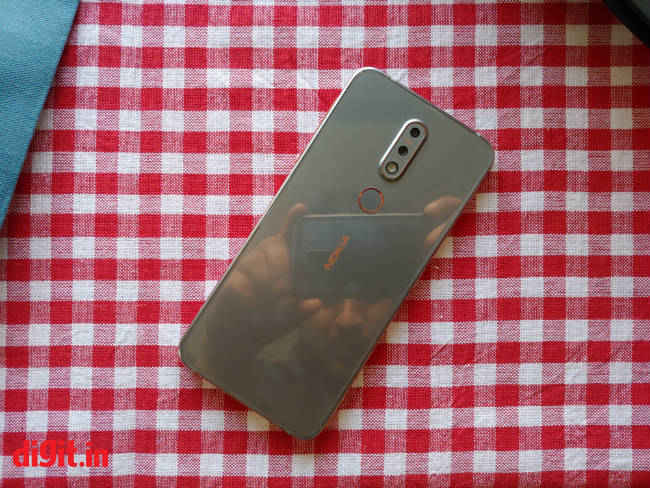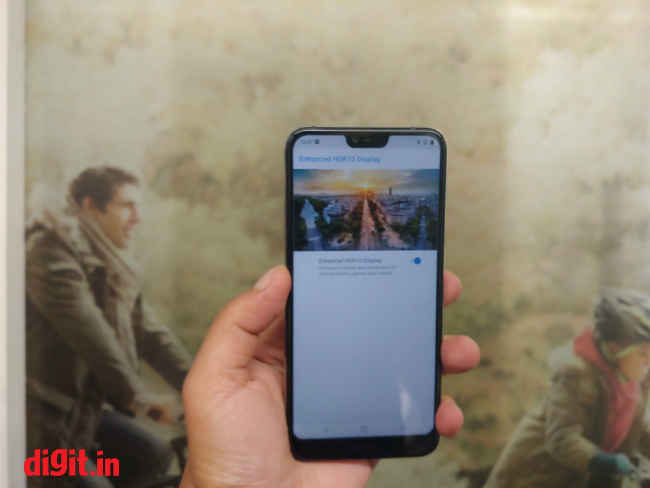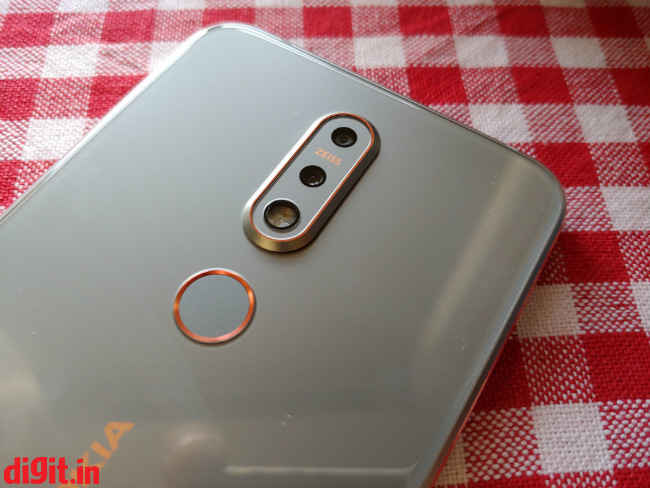Nokia 7.1 First Impressions: HDR display at a pocket-friendly price

The Nokia 7.1 may look like a mid-range device, but there's more than what meets the eye.
It’s been around 20 months HMD Global has been in existence and the way the company has resurrected the Nokia brand is nothing but phenomenal. In less than three years of coming back to the smartphone industry, Nokia is one of the top ten highest selling smartphone brands globally. In Europe, it’s in the top five and in the UK, it’s in the top three. While the company still has some ground to catch up against Xiaomi, Samsung and the likes, Nokia’s 2018 lineup has been quite impressive. The Nokia 7.1 that launched today in Europe encapsulates that all the things that made Nokia’s Android phones successful — A robust, durable design that lasts and software that’s the latest. It’s all anybody would want from a smartphone and the company has figured it out quickly enough.
Design that stands out
It’s easy to spot the Nokia 7.1 among a crowd of other phones. It takes the design refinements of the Nokia 6.1 Plus and makes it better. It’s sturdy and cannot be easily bent. The chassis is built out of a block of 6000 Series aluminium, covered in glass on both sides. While that’s common on quite a lot of phones in the price-range, it’s the diamond-cut anodised chamfers that make the Nokia 7.1 stand out. The phone is offered in two variants — Gloss midnight blue and gloss steel variants and my money’s on the latter. It simply stands out with the thin copper accents around the phone and the subtle steel colour that shines as light reflects off it. It’s something I’ve been seeing in mid-range phones of late where manufacturers are focusing on the design more to stand out from the competition.
HDR10 supported display
HDR in displays is something reserved for expensive flagships. It’s a highlight feature in the LG G7+ ThinQ that’s priced at Rs 40,000, but never before has a mid-range phone touted support for HDR playback. The Nokia 7.1 does. The spec-sheet claims it’s HDR10 supported and has a million to one contrast ratio. Further there’s a dedicated chip in the phone to process 500 million pixels per second to generate smooth and accurate HDR videos. For the limited period of time I used the phone, the 5.84-inch FullHD+ display certainly seemed bright and vibrant. However, there was no HDR video stored in the phone for me to experience. Interestingly, the same chip tasked to process HDR videos can also upscale standard videos to HDR. HMD said the phone relies on algorithms from Pixelworks to do this. Pixelwork is a US-based company that provides end-to-end solution to deliver HDR videos.
While HDR compatibility certainly sounds impressive, there’s very little HDR content to choose from these days as the standard still isn’t as pervasive as Nokia would like you to believe. The display also supports adaptive brightness, blue-light filter and the ability to adjust the colour temperature and the likes. The importance of having a rich, vibrant display cannot be stressed enough and it’s good to see Nokia bring that to more affordable smartphones.
Dual Zeiss Cameras
The brand names of Zeiss and Nokia used to be taken under the same breath when Nokia’s Lumia phones were still popular, and since last year, Nokia has rekindled that relationship. The result is phones like the Nokia 8 Sirocco, Nokia 7 Plus and the new Nokia 7.1 all have Zeiss certified optics. On the Nokia 7.1, there’s a 12+5MP dual camera unit at the back, raised slightly from the body. Up front is an 8MP sensor. The phone relies on the Pro Camera app to take photos, which has been proclaimed as one of the best to shoot photos from a smartphone. The pro camera controls slide up with one flick of the shutter button and all the other features are easily accessible.
There’s also some improvements in Nokia’s Bothie feature which is their term for the ability to shoot from both the front and the rear cameras simultaneously. You can ask Google Assistant to take a bothie. Furthermore, you can now adjust the size of each frame of the bothie and even freeze one of them.
The Nokia 7.1 also has the popular bokeh mode powered by AI. It seems to work all right from what I saw in the few minutes I had the phone with me. The photos otherwise turn out quite good with ample details and sharpness.
Reliable, but aged hardware
If you were thinking the Nokia 7.1 is an upgrade over the Nokia 7 Plus, it’s not. While the Nokia 7 Plus treaded the line between a mid-range and high-end with a Snapdragon 660 chipset, the Nokia 7.1 stays satisfied with a Qualcomm Snapdragon 636 chipset. It’s the chipset that powers the popular Xiaomi Redmi Note 5 Pro and also the Nokia 6.1 Plus. I’m assuming the raw performance of the Nokia 7.1 won’t be very different from them, and that’s alright. That’s because the Nokia 7.1 runs on a barebones, stock Android build. It’s Android One certified and is almost the AOSP version of Android. That makes the UI lightweight and doesn’t require a lot of horsepower to run smoothly. Based on the limited time I used the phone, it seemed quite fast and responsive. The Nokia 7.1 also promises regular updates. It already runs with the latest Android security patch, has Google Play Protect and promises an update to Android 9 Pie within a month. Nokia’s track record for pushing out updates have been nothing less than stellar. It started off with the promise of regular updates and has remained unchanged in its principles so far. The Nokia 7.1 comes with 4GB of RAM and 64GB of storage with support for expandable storage via a hybrid microSD slot. One of the variants have support for Dual-SIM as well. The battery on the phone is 3,060mAh and charges through a fast charger that comes out of the box.
First Impressions
The Nokia 7.1 stays loyal to the company’s philosophies and comes off as an impressive offering in the upper mid-range segment. It cannot be called as an upgrade to the Nokia 7 Plus though as the chipset powering the phone is hierarchically lower than the Snapdragon 660. However, the phone felt quite smooth and fast for the limited time I used it. The highlight of the phone is of course the unique glass design and the HDR10 compliant display which are sure to pique the interests of a sophisticated user and perhaps, that’s exactly what Nokia is aiming for with the Nokia 7.1.









